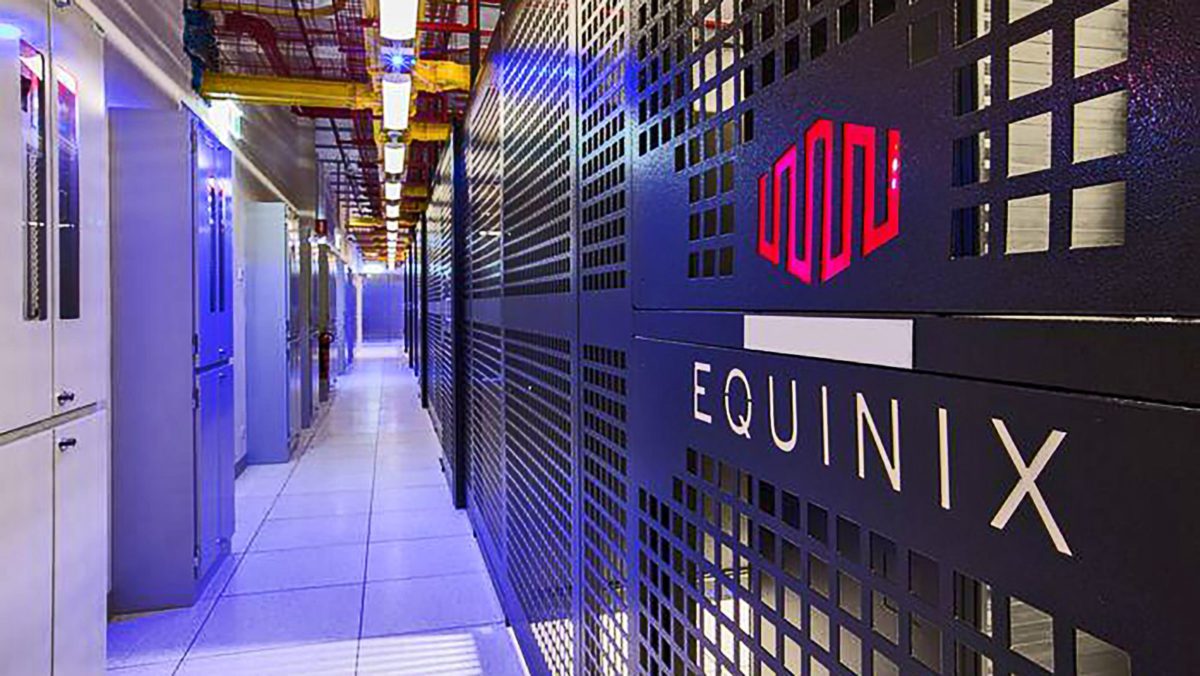Powering the cloud
We recently hosted our latest Market Thinker’s podcast on the topic of ‘cloud computing’, which despite seeing double-digit growth for close to a decade, is still considered an emerging ‘theme’. The pandemic has forced businesses large and small to accelerate their adoption of cloud computing and other disruptive technologies, and the resulting growth rates have been huge. Amazon Web Services remains the fastest growing part of the Amazon (NYSE: AMZN) goliath, with December quarter revenue from the business unit growing a remarkable 28%, but still a smaller part of the overall business.
Amazon and Microsoft, however, aren’t the only players, so this week we take a quick look at their competitor, Equinix (Nasdaq: EQIX). Equinix, along with Next DC (ASX: NXT), is one of the two key public data centre providers in Australia, with Equinix having one in each major city. More broadly, the company operates 210 data centres in 25 countries across five different continents, so it is a truly global business. While technically structured as a real estate investment trust (REIT), the company is far more than that, providing important digital ‘infrastructure-as-a-service’ to companies around the world.
Data centres, which ultimately power the cloud, are an important input into the most important trends in the world, from big data to artificial intelligence and machine learning. For instance, in our recent call we discuss the fact that an autonomous car produces as much as six terabytes of data per day; that data has to go somewhere. Data centres like Equinix also power nearly everything we use on a daily basis, whether that is connecting Zoom calls, storing the Netflix videos you are watching or accessing your portfolio.
In many cases it is as simple as ‘click and connect’, but for many businesses it is much more complicated. Global or national businesses require access to multiple applications using multiple data centres just to operate on a daily basis. The result is that the connectivity, and security, between these data centres is just as important as the data centres themselves.

In simple terms, data centres allow companies to buy ‘shelf space’ within secure, large and well-located data centres, rather than run their own internal servers. The data centre provider guarantees that customers will never lose connectivity, and provides their entire system for a subscription-like fee; that ultimate multiplier for tech company valuations. The user is able to install whatever hardware they require and enters a long-term agreement allowing the data centre to continue to invest and expand. The benefit can be substantial, with estimates of cost savings of as much as 70% on IT for many businesses.
Times have been good for data centre providers, which have some level of oligopoly across the world. Huge amounts of capital are required to purchase, build and operate these buildings, which is a natural barrier to entry. In February this year, Equinix reported its 72nd consecutive quarter of revenue growth, adding 8% in the three months to December. This track record basically spans the entire lifecycle of data centre providers in modern business. While profit fell by 10%, down to US$1.05 billion, a significant portion of this was due to a number of new acquisitions being expensed along with a major European asset sale the year prior.

Data centres are somewhat like an annuity: if you build it, they will come. Revenue and earnings are consistent, and somewhat predictable, with the backdrop of a sector growing by at least 15% per annum, five times that of the broader economy. Tracking their annual revenue growth is a lesson in compounding, starting at US$221 million in 2005, to ultimately reach nearly US$6 billion in 2020.
The data centre business is by no means ‘set and forget’ either. With technology moving so fast and data being produced at an incredible rate, the needs of businesses and consumers evolve on a near-daily basis. For instance, Equinix recently announced a new service capability called Precision Timeâ„¢, described as ‘edge’ connectivity that assists with security and latency. Latency is of course one of the biggest issues facing technology and other businesses, referring to the time it takes to connect and communicate with the ‘server’ or application you are using.
Latency is vitally important for a range of different sectors, including online gaming, financial services, media, medical and government sectors. For instance, online gaming platforms require consistent connections that bring people together from different corners of the world without delay; media companies need to minimise the risks of ‘lip sync’ issues that occur when audio and video is recorded separately; and financial services companies rely on low latency to utilise high-frequency trading (HFT) and other platforms. These opportunities, as readers can readily appreciate, are significant.
With something like 70% of costs taken up by energy, data centres may not meet the increasingly popular ‘ESG’ factors that investors are seeking. Equinix appears to be embracing its impact on the environment, this year joining the Climate Neutral Data Centre Pact, committing to being climate-neutral by 2030. More recently, the group raised EUR$1.1 billion ($1.7 billion) through a “green bond,” with the proceeds committed to funding investment in renewable energy, better waste management, water use and other eligible green projects.
Equinix is by no means a dividend stock, yielding just 1.7%, but it nearly fits into the Dividend Aristocrat group, having increased its payout almost every year. The current P/E is high, at 164 times, however, this traditional measure isn’t appropriate for a company that relies on regular capital raisings and which must expense significant amounts of capital to construct new centres, penalising it on the ‘earnings’ line of the P/E ratio.










